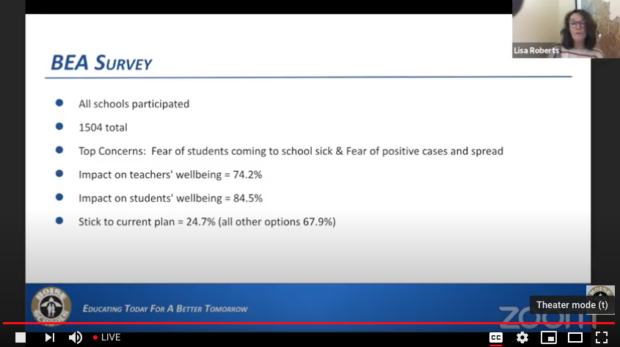The Boise School District will proceed with a plan to bring middle and high school students back to schools Monday, a move OK’d by local health officials even as they announced Ada County is in the highest risk category for COVID-19 spread.
Secondary students are the last group of Boise students to return to buildings. Pre-K through sixth-graders have been gradually coming back to school part-time over the last month.
Boise might be the last district in the state to let secondary students back in classrooms, deputy superintendent Lisa Roberts told trustees at a meeting Thursday.
“We have the data that says we have done a good job in our schools,” trustee Nancy Gregory said. “I feel that it is incumbent upon us to bring our secondary back in.”
Thursday’s meeting didn’t offer any major departure from the district’s existing plan for returning to school, but trustees did go over more details. Here’s what they had to say.
Why is this different than “red” operations in August?
Ada County was also in the “red” or highest risk category for COVID-19 when school started in August, prompting Boise to begin the year with virtual learning for all students.
As cases improved, Boise advanced to the “yellow” and started bringing kids back to school part-time. But the district’s plan always left open the possibility that it could keep doing hybrid learning if cases got worse, trustees said. Returning to “red” didn’t mean the district would immediately send kids home.

And last week, Central District Health revised its recommendations for schools operating in red counties. That category generally recommends schools use remote instruction over in-person learning. But CDH said on Friday it will support districts “maintaining operations with some level of in-person learning,” for now.
Boise’s reopening plans and CHD guidelines, are both subject to change if the threat or spread of COVID-19 intensifies.
Why does the district want to bring secondary students back?
Middle and high school students’ grades are slipping. Teachers and parents across the district have told Roberts that students who don’t typically struggle in school are missing assignments or floundering in class. And everyone is worried about kids’ mental health.
“It’s so difficult when the kids are sitting at home, alone,” Roberts said. “Their parents are off at work and now, maybe their younger siblings are off to school.”
When Boise first unveiled its phased return-to-school plan, Roberts said some parents were frustrated that secondary students had to wait two weeks after elementary kids to return to school. Now, the district has moved to “red” just days before those kids were supposed to come back.
But trustees — and local health officials — say Boise has managed to keep kids safe in school buildings thus far. The district thinks it can continue the trend as it welcomes older kids back to classrooms.
How do teachers feel?
This was not abundantly clear at Thursday’s meeting.
Roberts said she had met with Boise Education Association leaders, who raised concerns about the volume of students who would return to middle and high school buildings. She also shared some data from a union survey, but was not certain what the results meant.

Roberts said she plans to meet with the union again Friday to get a clearer picture of where things stand. Union president Stephanie Myers did not immediately respond to an EdNews request to clarify the survey data. Myers did say at a meeting last week that teachers were nervous about the plan.
The muddled picture frustrated trustee Dennis Doan, who asked the union to “take a stand.”
“If they chose not to take a stand tomorrow and tell us which way they want us to go, then that’s OK,” Doan said. “But don’t complain afterwards.”
What about sports?
Sports are still on for now. The district says it has not seen a single case of community spread among student athletes. But, because Boise is now in the “red,” the district will prohibit fans at games for the rest of the season. It is also considering changing sideline protocols for players, like asking them to sit in spread-out chairs as opposed to sharing a bench.
No word yet on exactly what changes will happen in winter sports.
